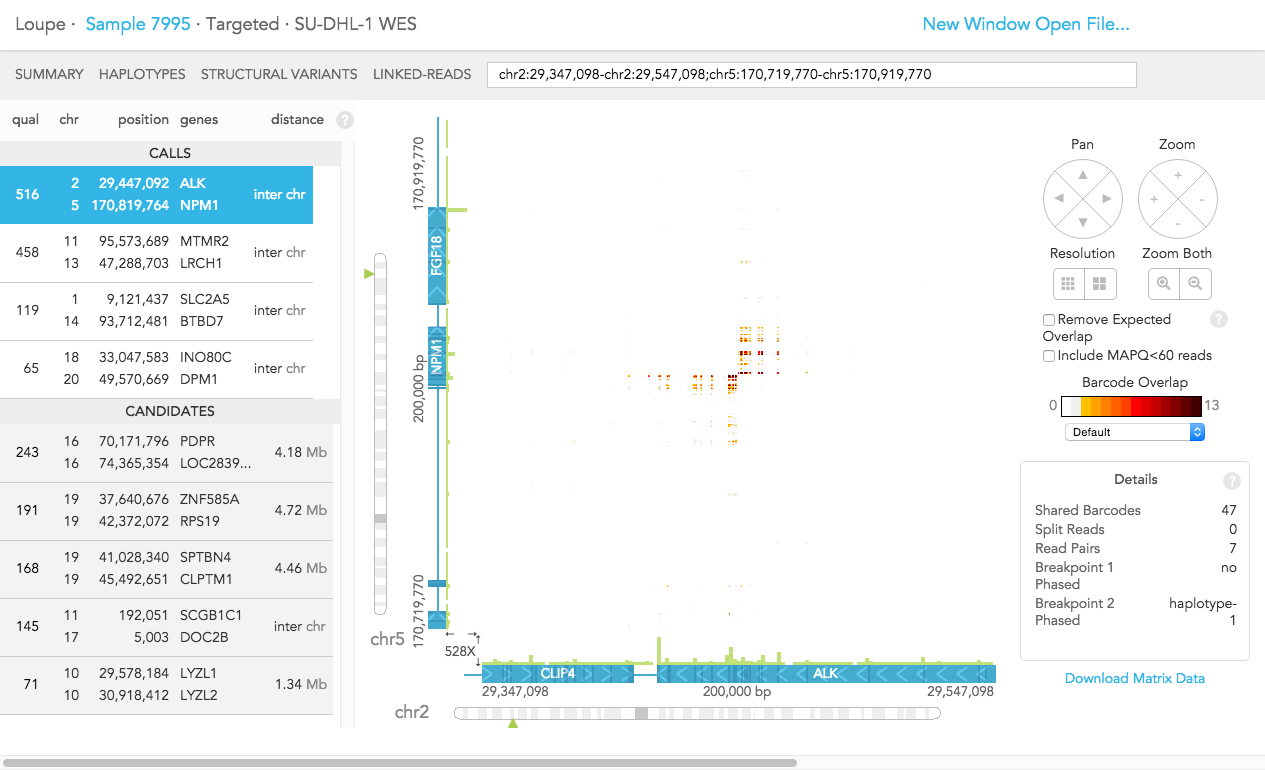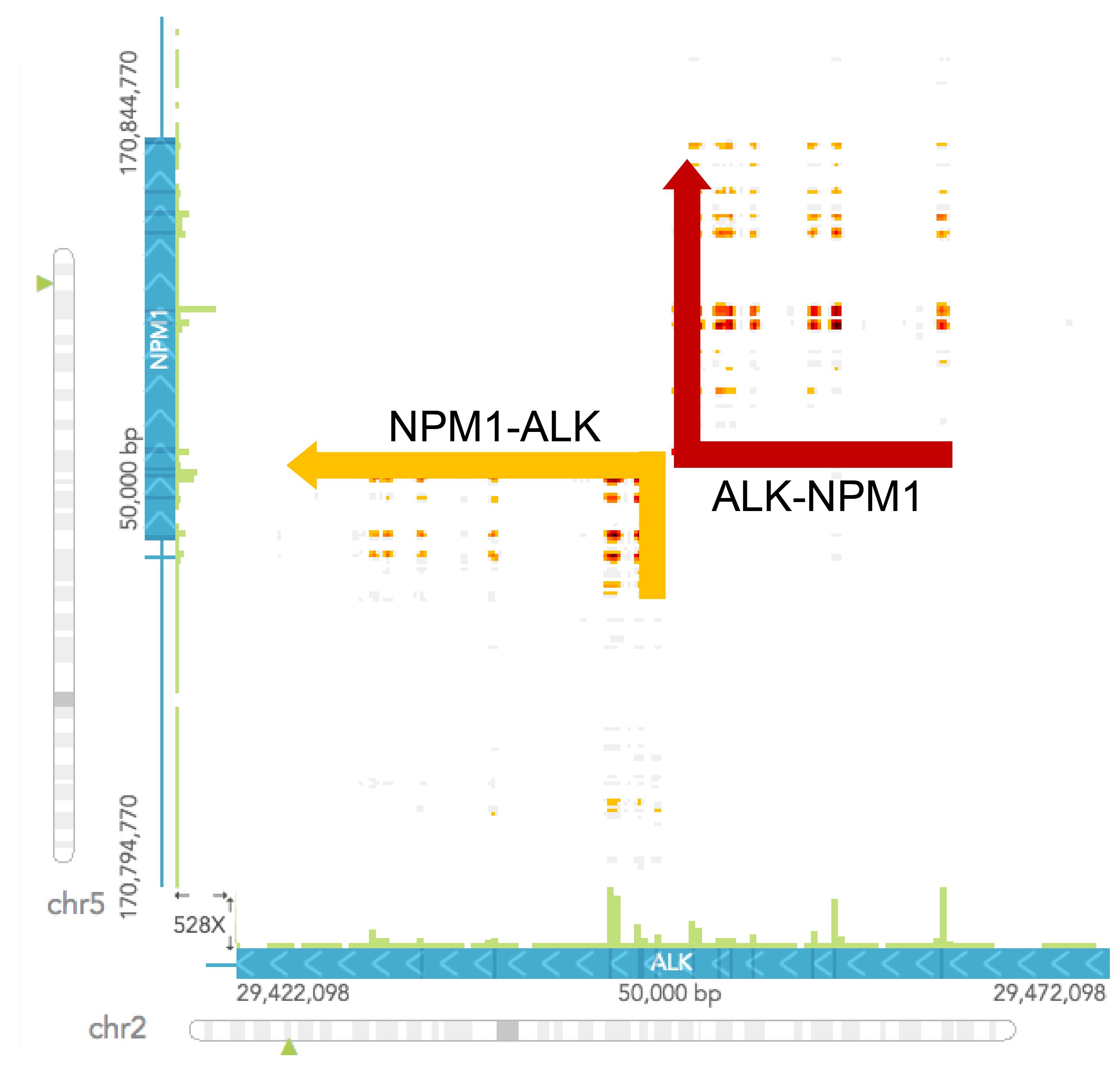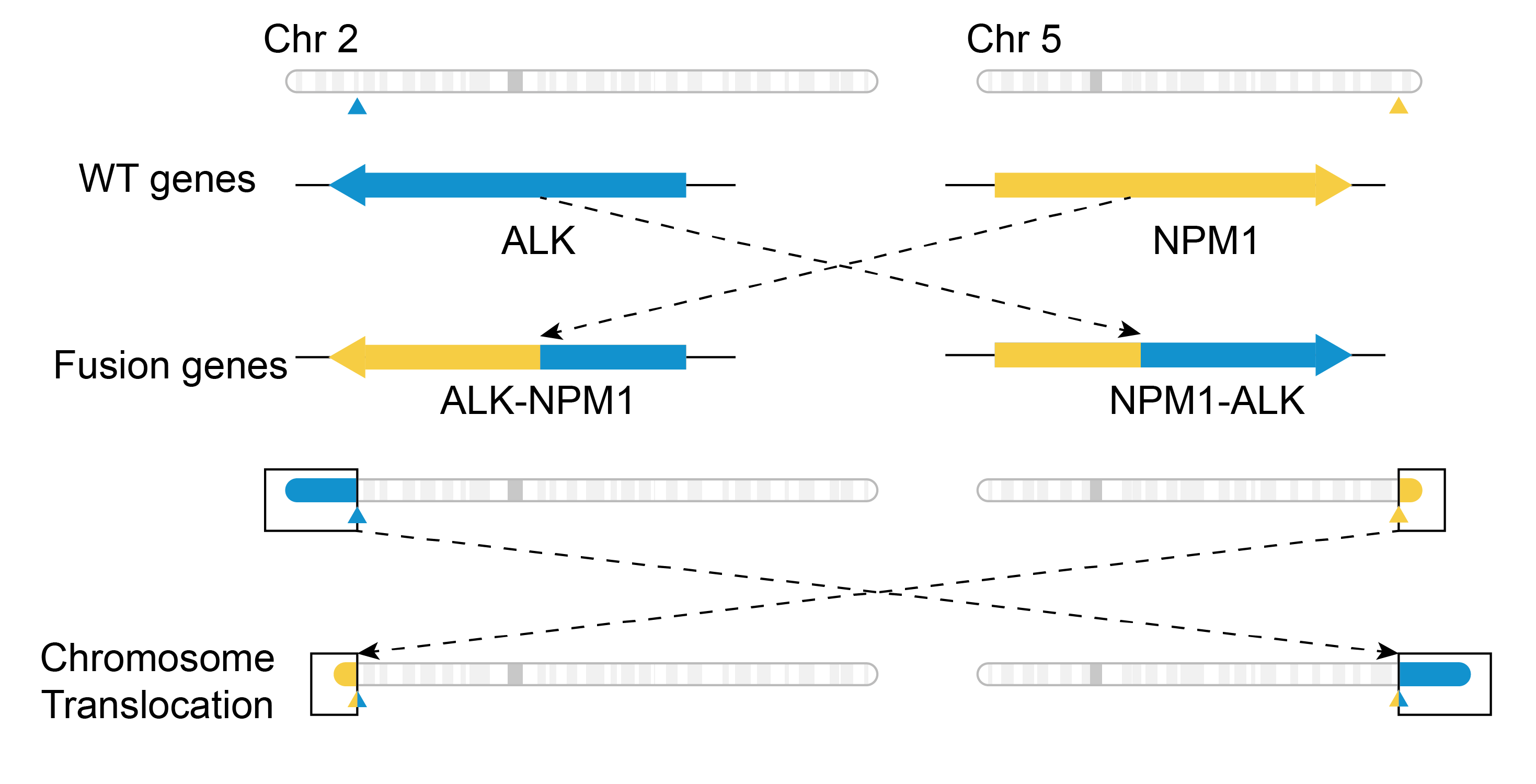10x Genomics
Chromium Genome & Exome
Long Ranger2.1 (latest), printed on 07/19/2025
NPM1-ALK Gene Fusion
| Analysis software for 10x Genomics linked read products is no longer supported. Raw data processing pipelines and visualization tools are available for download and can be used for analyzing legacy data from 10x Genomics kits in accordance with our end user licensing agreement without support. |
Here is an example showing interpretation of a gene fusion in a cancer cell line. The large cell lymphoma cell line SU-DHL-1 contains an oncogenic fusion tyrosine kinase, NPM1-ALK. ALK fusion proteins are found in many cancers and ALK inhibitors have been shown to treat some malignancies. Whole exome libraries are made with Chromium technology, Long Ranger is used for analysis and structural variant detection and Loupe is used for visualization.
Interpretation of Structural Variants
The example structural variant, ALK NPM1, is selected from the CALLS section of the STRUCTURAL VARIANTS view below.

The barcode overlap signal is strongest in the center of the matrix view. In the example above there are two junctions that meet in the center of the view. NPM1 protein coding increases going from the bottom to the top of the view. ALK coding goes from right to left. If you follow the direction of coding (arrows in genes) toward each breakpoint and then away you can determine if you have a fusion or a non-functional SV. In this case there are two fusion: NPM1-ALK (bottom left) and ALK-NPM1 (top right) as labeled below.

To determine the chromosomal rearrangement it is easiest to draw out a schematic of the wild type gene organization based on the HAPLOTYPES view and the fusions determined using the STRUCTURAL VARIANTS view. The most likely mechanism for the fusions is a reciprocal translocation of the end of the p arm of chromosome 2 for the end of the q arm of chromosome 5 as shown below.
